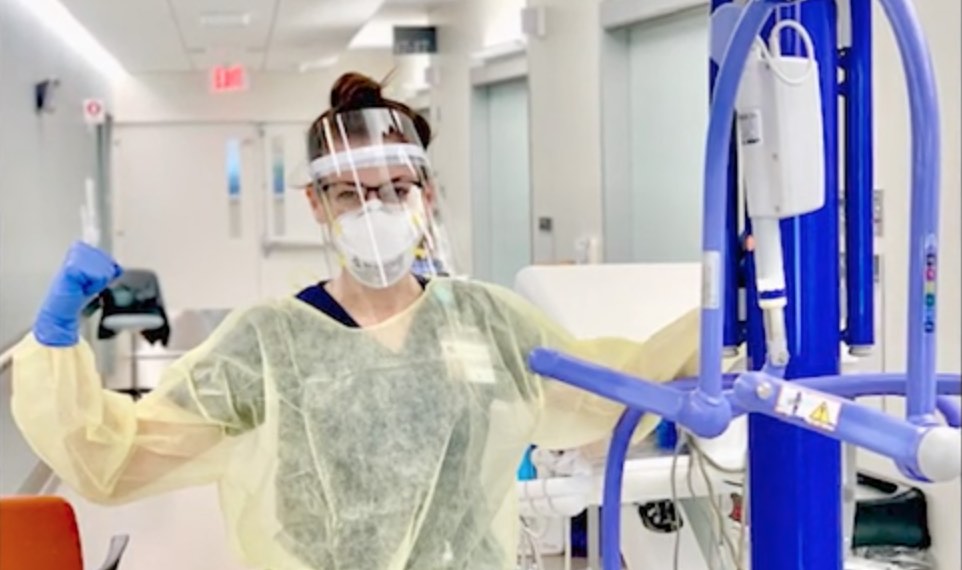Chlorhexidine dressings reduce catheter-related infections
Reuters Health • The Doctor's Channel Daily Newscast
March 24, 2009 • Critical Care, Hospitalist, Infectious Diseases, Internal Medicine, Nurses/NP/PA, Preventative Health, Reuters Health • The Doctor's Channel Newscast, Surgery
NEW YORK (Reuters Health) – In a study of critically ill adults, use of chlorhexidine gluconate-impregnated sponges for dressings significantly reduced the risk of catheter-related infections compared with use of standard dressings, new research shows.
Moreover, the benefit was apparent even though catheter infection rates were already low, according to the report in the Journal of the American Medical Association for March 25.
The results also suggest that unsoiled adherent dressings can be changed every 7 days instead of every 3 days without increasing the risk of infection. However, careful monitoring of the dressing is a must, and with any sign of soilage or leakage, the dressing must be changed immediately. Because such unscheduled changes were common, use of a 7-day change interval only modestly reduced the total number of dressing changes.
Dr. Jean-Francois Timsit, from University Joseph Fourier, Grenoble, France, and co-researchers assessed the rate of catheter-related infections in 1636 patients who were randomized to receive chlorhexidine gluconate-impregnated sponges or standard dressings, changed every 3 or 7 days.
The main outcome measure, major catheter-related infections, was defined as clinical sepsis with or without bloodstream infection, the report indicates.
Compared with standard dressings use, chlorhexidine sponges reduced the rate of major catheter-related infections from 1.4 to 0.6 per 1000 catheter-days (p = 0.03) and the rate of catheter-related bloodstream infections from 1.3 to 0.40 per 1000 catheter-days.
The authors calculate that use of chlorhexidine gluconate-impregnated sponges prevented 1 major catheter-related infections for every 117 catheters placed.
Testing of skin samples obtained at catheter removal indicated no increase in bacterial resistance with chlorhexidine sponge use, the authors note.
The catheter colonization rate with 7-day dressing change intervals was 8.6%, higher but not significantly different from the 7.8% rate seen with 3-day intervals. Use of 7-day intervals reduced the median number of dressing changes per catheter from 4 to 3 (p < 0.001).
The present study “has the potential to change the current clinical approach, given that rates of catheter-related bloodstream infection were driven even lower through the relatively simple use of chlorhexidine gluconate-impregnated sponges dressing,” Dr. Eli N. Perencevich, from the University of Maryland School of Medicine, Baltimore, and Dr. Didier Pittet, from the World Health Organization, Geneva, Switzerland, write in a related editorial.
“Further advances in infection prevention,” they add, “will require similar investments in government-sponsored, high-quality randomized controlled trials.”
Reference:
JAMA 2009;301:1231-1241,1285-1287.
Moreover, the benefit was apparent even though catheter infection rates were already low, according to the report in the Journal of the American Medical Association for March 25.
The results also suggest that unsoiled adherent dressings can be changed every 7 days instead of every 3 days without increasing the risk of infection. However, careful monitoring of the dressing is a must, and with any sign of soilage or leakage, the dressing must be changed immediately. Because such unscheduled changes were common, use of a 7-day change interval only modestly reduced the total number of dressing changes.
Dr. Jean-Francois Timsit, from University Joseph Fourier, Grenoble, France, and co-researchers assessed the rate of catheter-related infections in 1636 patients who were randomized to receive chlorhexidine gluconate-impregnated sponges or standard dressings, changed every 3 or 7 days.
The main outcome measure, major catheter-related infections, was defined as clinical sepsis with or without bloodstream infection, the report indicates.
Compared with standard dressings use, chlorhexidine sponges reduced the rate of major catheter-related infections from 1.4 to 0.6 per 1000 catheter-days (p = 0.03) and the rate of catheter-related bloodstream infections from 1.3 to 0.40 per 1000 catheter-days.
The authors calculate that use of chlorhexidine gluconate-impregnated sponges prevented 1 major catheter-related infections for every 117 catheters placed.
Testing of skin samples obtained at catheter removal indicated no increase in bacterial resistance with chlorhexidine sponge use, the authors note.
The catheter colonization rate with 7-day dressing change intervals was 8.6%, higher but not significantly different from the 7.8% rate seen with 3-day intervals. Use of 7-day intervals reduced the median number of dressing changes per catheter from 4 to 3 (p < 0.001).
The present study “has the potential to change the current clinical approach, given that rates of catheter-related bloodstream infection were driven even lower through the relatively simple use of chlorhexidine gluconate-impregnated sponges dressing,” Dr. Eli N. Perencevich, from the University of Maryland School of Medicine, Baltimore, and Dr. Didier Pittet, from the World Health Organization, Geneva, Switzerland, write in a related editorial.
“Further advances in infection prevention,” they add, “will require similar investments in government-sponsored, high-quality randomized controlled trials.”
Reference:
JAMA 2009;301:1231-1241,1285-1287.









